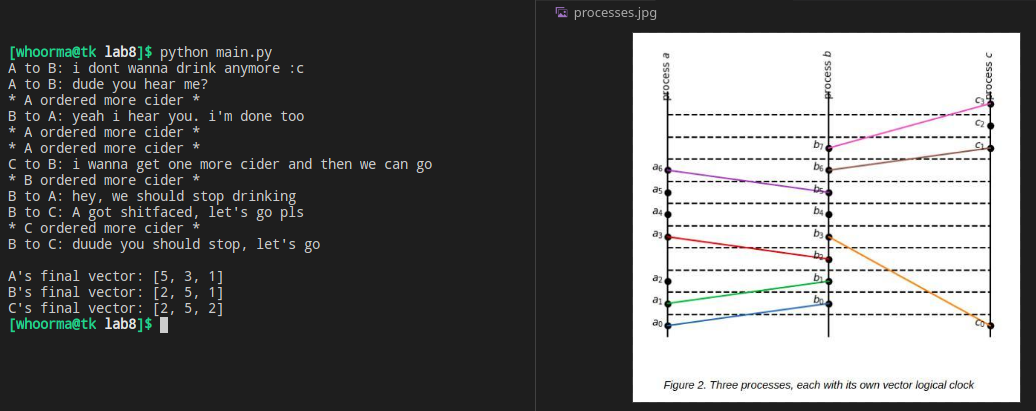Anna Boronina (@whoorma)
github repository with the source code
Q1: What is a stratum in terms of NTP?
A1: Stratum is a measure of synchronization distance from the primary time source. It helps to find the most accurate time sources and to prevent time loops. There are 3 levels of stratum: 0, 1, and 2. Stratum 0 is the most accurate one (atomic clock), but they cannot be connected to over the network. Stratum 1 is the most accurate source of time for NTP that is available via network. Stratum 1 usually uses stratum 0 for synchronization. The next level is stratum 2 - they are least accurate because they are synchronized with stratum 1 therefore they bring some overhead and are the least accurate. There are next levels, as I understood. The further from 0, the worse the accuracy. Also, stratum N+1 uses stratum N.
Q2: Provide the output of ntpq -p command from the client and describe the meaning of the following fields: remote, refid, st, t, when, poll, reach, delay, offset, and jitter.
A2:
remote: NTP server we are connected to
refid: an opaque 32 bit identifier for the selected upstream peer of the peer - refers to the NTP servers that the remote servers are connected to
st: stratum level
t: the type that the server is using: unicast, multicast, broadcast, manycast. It is unicast in our case
when: how long ago since the last time the server was polled
poll: how often the server is polled (usually it's set to 64 seconds)
reach: result of the most recent 8 NTP updates (set to 377 (octal system) if all 8 were successful - not the case for us - i honestly don't know why it shows 1)
delay: delay in reaching the server
offset: difference between the local clock and the server's clock
jitter: network latency
Q3: What are the lacks of using the Lamport’s algorithm?
A3: The algorithm has a few disadvantages:
- Failure of one process may bring the progress down - vectors that interacted with a failed process will not be properly updated
- If we have N processes, then the algorithm's complexity is 3(N-1)* messages per event, since we have 3 types of messages: request (send a message), reply (receive a message) and release (imitate event).
You can see the output of the program below and compare it to the picture.

